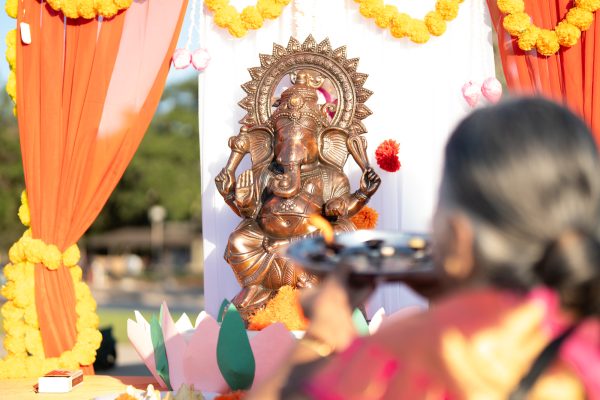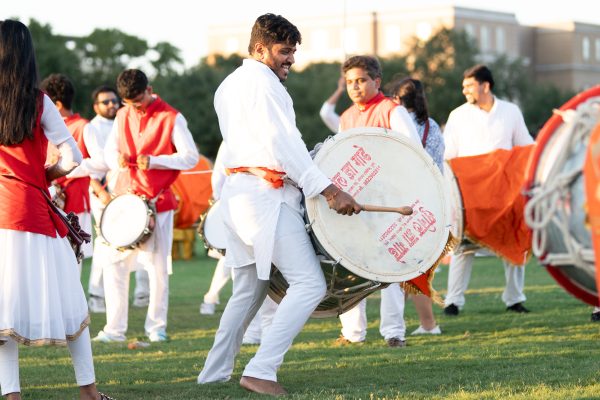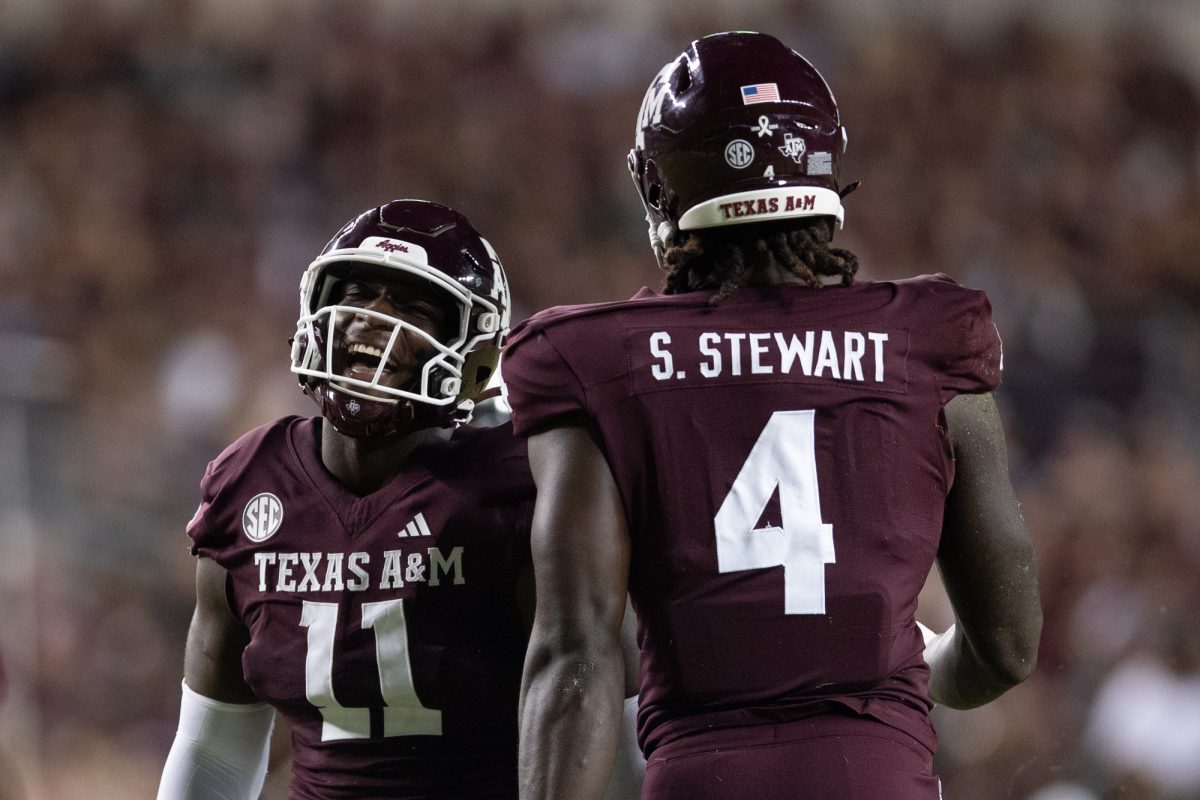Lively music, dancing, unity and culture were all on display over this past weekend on campus at Texas A&M. For many, the month of September marks the start of the semester, and, in turn, anticipation of new beginnings. This is especially true for Hindus, as September is the time of Ganesh Utsav, the celebratory festival honoring Ganesha, the god of new beginnings and prosperity.
This past Sunday, the Aggie chapter of Hindu YUVA transformed Simpson Drill Field into a place of commemoration and displayed the rich culture of Hinduism. This celebration of Ganesh Utsav contained dancing, music and an opportunity for shared celebration.
The festival of Ganesh Utsav, or Ganesh Chaturthi, is an important time of observance for Hindus to welcome new beginnings and hope for prosperity. Students like mechanical engineering senior Shivam Vashi hope to take advantage of the new season.

“I’m basically planning to get an internship and get industry work experience,” Vashi said. “My field of research is autonomous vehicles and self-driving cars. So I really want to get out in the world and try to have a real world experience.”
The goals don’t have to be professional. Sophomore public health major Riya Meka focused more on how she would like to transform in her personal life.
“In the social and mental side of it, I definitely want to transform into a better person every year by stepping out of my comfort zone and talking to different people and being part of activities that I usually don’t participate in,” Meka said.
Ganesh Chaturthi is observed on Sept. 7 each year and sparks a 10-day event. Throughout the 10 days, Hindus everywhere recognize the birth and journey of Lord Ganesha as he returns to his mother, Parvati. Ganesha was born to Mata Parvati and Lord Shiva as a son who was loyal to Parvati. Lord Shiva eventually beheaded Ganesha after he denied Shiva entrance to see Parvati at her request.
Mata Parvati became distraught, and Shiva asked Lord Brahma to return with the head of an animal; Brahma soon brought back the head of an elephant, which was then placed on Ganesha’s body. Shiva remorsefully granted a blessing on Ganesha that he should be worshipped, which shaped the celebration and folklore of Ganesh Chaturthi.
“We just made a clay Ganesha,” Meka said. “We call it puja, and we do it for 10 days. And then on the 10th day, we submerge the clay model into water. Kind of appreciating and welcoming the god and also sending him away with the equal amount of respect.”

Ganesh Chaturthi offers a myriad of ways to celebrate, such as that of Vashi, who only attended the event put on by Hindu YUVA, and Meka who honored Ganesha both at home and on Sunday. Despite the differences in celebration, the unity of Hindus in the Bryan-College Station area was expressed through dance, music and community.
While the population of Hindus is quite large in the U.S., there are still common misconceptions about the religion, especially its deities.
“Usually, they think the god is an elephant, which he is, but he’s … a god version of another god,” Meka said. “And he does look like an elephant, but we don’t consider him as one.”
An elephant has a much greater meaning, however, and is considered quite sacred in Hindu culture. The elephant represents power and transformation. The story of Ganesha demonstrates a larger meaning of the mind connecting with the soul.
For many, Ganesh Chaturthi is a time of divinity and a reminder to enjoy the changes life brings despite the hardships.
“Today’s festival is about how can you enjoy the new beginnings of your life,” Vashi said.
















